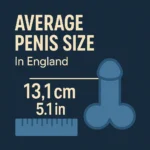Secrets from Ancient Medicine: How Civilizations Measured & Enhanced Size
Before modern science, ancient civilizations had their own beliefs and data regarding penis size. From medicinal scrolls to religious texts, the male organ was often discussed not just in terms of reproduction, but as a symbol of power, fertility, and health.
Egyptian Papyrus and Phallic Symbolism
Ancient Egyptian medicine often tied phallic health to overall vitality. The Ebers Papyrus, one of the oldest medical texts known, described treatments for erectile issues using natural herbs and oils. Penis size was believed to reflect one’s spiritual and reproductive strength.
Ayurvedic Writings in India
Indian Ayurvedic texts went further, offering classifications of penis types and herbal formulas to enhance size and stamina. Ingredients like ashwagandha and shilajit were prized for their restorative properties.
Traditional Chinese Medicine (TCM)
In China, sexual health was deeply linked to energy (Qi). TCM practitioners used ginseng, horny goat weed, and acupuncture to promote vitality. Penis size was seen as partially inherited, but also modifiable through lifestyle and energy practices.
Explore how these beliefs compare with today’s evidence in our article on the science behind penis enlargement supplements.
Greek and Roman Ideals of Size
Surprisingly, ancient Greek art favored smaller penises, associating them with intellect and restraint. Larger organs were linked to barbarism and lack of control. Roman medical texts, however, did record methods to treat erectile dysfunction and even size-enhancing massages.
Folk Remedies Across Continents
African, South American, and Polynesian cultures often used oils, roots, and manual techniques for penis growth. Some tribes even practiced ritual stretching or weight application.
Want to know how this evolved over time? Dive into the future of penis size research.
Curious about modern methods that actually work? Explore the full system now.
Sexual Medicine in Mesopotamia and Babylonia
In ancient Mesopotamia, male virility was closely linked to divine favor. Clay tablets from Babylon mention rituals and medicinal concoctions used to cure impotence and increase masculine prowess. Many of these involved sacred oils, prayer chants, and even phallic amulets.
Interestingly, priests often acted as early sex therapists. Their records indicate that penis size was discussed not only in physical terms but also as a marker of one’s ability to please a partner — a view not unlike modern male insecurities.
Penis Size and Power in African Tribes
Many African cultures associated a larger penis with leadership and fertility. In some West African tribes, elder men passed down “growth rituals” involving special roots, heat application, and stretching. While not medically validated, these practices reveal a long-standing curiosity about penis enhancement.
In Southern Africa, cultural dances and fertility rites often symbolized virility. Some even used ceremonial penis sheaths that emphasized length and presence during ritual performances.
The Spiritual Role of Penis Size in Ancient Cultures
Throughout history, the male member was rarely just a body part. In ancient Japan, phallic festivals like Kanamara Matsuri celebrated fertility and invoked blessings for sexual health. The Shinto belief system often portrayed the penis as a divine instrument of life.
Similarly, in Polynesia, tiki carvings with exaggerated genitals were revered as protectors of households and fertility totems.
Comparative Herbal Medicine for Sexual Health
Across all ancient civilizations, herbal medicine was the go-to approach for boosting sexual vitality. While the formulas differed, the intention was the same: to enhance desire, performance, and — when possible — size. Some popular herbs included:
- Ashwagandha: Used in India to support hormonal balance and stamina.
- Ginseng: Valued in China and Korea for energy and libido.
- Muira Puama: Known as “potency wood” in South American traditions.
- Maca root: A staple in Incan medicine, believed to boost libido and semen volume.
Curious how these compare to modern solutions? Read our article on natural testosterone booster foods.
How Ancient Techniques Inspired Modern Methods
Many modern penis enlargement routines borrow from ancient traditions. The principle of tissue expansion, used in tribal stretching methods, now appears in devices like pumps and extenders. Even jelqing — popular today — resembles milking motions found in historical Arab texts.
Modern supplements also draw on traditional herbs. Products that include horny goat weed, ginseng, or tribulus terrestris are essentially refined versions of centuries-old formulas.
Scientific Scrutiny of Ancient Claims
While ancient beliefs provide cultural insight, many of the claims lack scientific validation. Modern medicine demands evidence through controlled studies, which most ancient techniques never underwent. Still, their persistence suggests some perceived benefit — psychological or otherwise.
Our in-depth article on penis size research in different continents compares ancient views with today’s scientific findings.
Modern Misconceptions vs. Historical Realities
Today’s obsession with size is largely fueled by media and pornography. In contrast, many ancient societies had more nuanced views. For example, while larger penises were celebrated in African and Polynesian cultures, Greek society preferred modest proportions as a sign of rationality and balance.
Modern men often believe they’re smaller than average due to distorted expectations. Ancient texts, however, rarely mention specific measurements — instead focusing on function, pleasure, and fertility.
What Ancient Medicine Got Right
Although ancient techniques lacked modern tools, they were often ahead of their time in emphasizing holistic health. Sexual wellness wasn’t isolated — it was connected to diet, spirit, mental state, and physical discipline.
Lessons from the Past for Modern Enhancement
Ancient cultures believed growth and virility were within reach through dedication, rituals, and nature. While not every technique was scientifically valid, their persistence shows a timeless male pursuit: to feel powerful, confident, and in control of one’s body.
That’s why modern enhancement isn’t about gimmicks — it’s about blending time-tested practices with today’s science. From herbal support to structured routines, the journey is now more personalized and effective than ever.
Final Reflections
Penis size has fascinated humanity for millennia. Whether through sacred rituals, medicinal texts, or cultural art, it’s clear that male enhancement is not a modern obsession — it’s an ancient quest. By learning from the past and applying it with today’s knowledge, men can find both physical and psychological growth.
Want more insights backed by data? See our recent feature on the urban vs. rural penis size differences.
Did Ancient Cultures Measure Penis Size?
Historical evidence suggests that while measurements weren’t standardized, references to size existed metaphorically and visually. Statues, scroll illustrations, and poetic descriptions often implied size rather than numerically defining it.
In India’s Kama Sutra, for instance, men were categorized by size using animal metaphors. Similarly, Chinese Taoist texts described ideal proportions for harmonious sexual energy exchange, not just pleasure.
This non-numeric approach stands in contrast to today’s obsession with exact inches and centimeters — suggesting that confidence, health, and performance held more value than sheer measurements in the ancient world.








